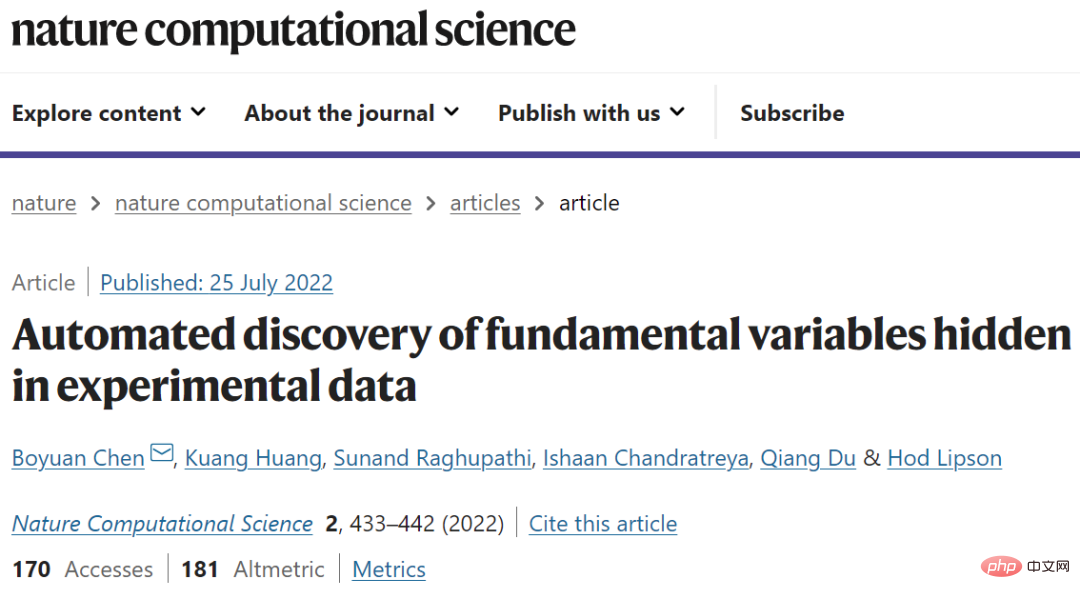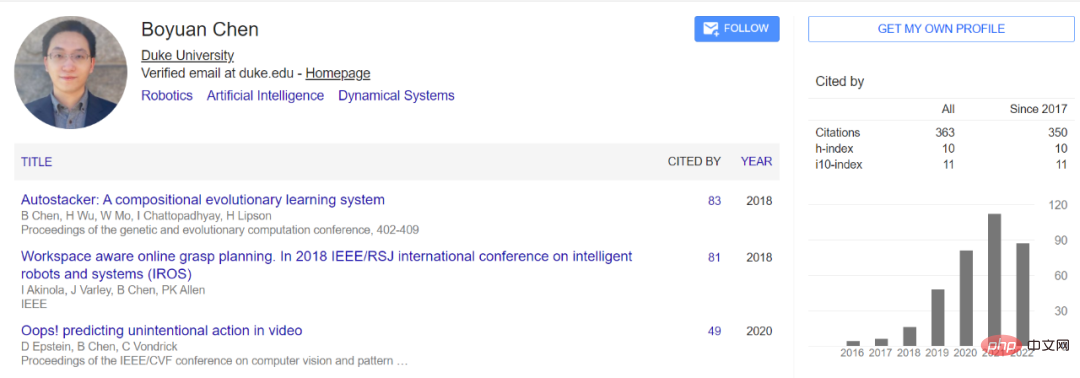
Letting AI discover physical laws is nothing new. Some time ago, we reported the news that "give GNN a bunch of data, and it can discover the law of gravity by itself." But what if we don't even give it variables? A study from Columbia University shows that AI can extract variables on its own just by observing phenomena through a camera, and some of them may not be discovered by humans yet. If we use this method to discover new variables, can we discover new physical laws?
E = mc² is a mass-energy equation that explains the relationship between energy and mass, where E represents energy, m represents mass, and c represents the speed of light (constant, c=299792458m/s, sometimes taken 3.00×108 m/s). The mass-energy equation was proposed by Einstein. It is mainly used to explain the mass loss in nuclear reactions and to calculate the energy of particles in high-energy physics. It also contributed to the birth of wave mechanics.
More than a hundred years ago, Einstein obviously had the basic variables of energy, mass and speed before proposing this equation. Without these variables, even Einstein would not have been able to discover the theory of relativity. But surprisingly, artificial intelligence can now automatically discover these variables, some of which are beyond the scope of human knowledge, which will greatly speed up scientific discovery.
This is a new study from Columbia University. Researchers tried to let an artificial intelligence program observe physical phenomena through cameras, and then tried to search for the smallest basic variables that can fully describe the observed phenomena. set. The research paper was published July 25 in the journal Nature Computational Science.

##Paper address: https://www.nature.com/articles/s43588-022-00281-6
As shown in the figure below, this research allows AI to observe videos of moving chaotic joystick-driven systems, and identify and extract from these high-dimensional video clips the minimum states required to describe such systems. variable.

The scientists first fed the system raw video clips of physical phenomena for which they already knew the solution. For example, they provided a video of a swinging pendulum, which is known to have four "state variables"—the angle and angular velocity of each of its two arms. After several hours of analysis, the AI outputted the answer: 4.7.
"We think this answer is close enough," said Hod Lipson, co-author of the paper and director of the Creative Machines Lab in the Department of Mechanical Engineering. "Especially considering that all the AI has access to is raw video footage, without any knowledge of physics or geometry. But we want to know what variables it uses, not just a number."
The researchers then went on to visualize the actual variables identified by the AI program. Extracting the variables itself is difficult because the program cannot describe them in any intuitive way that humans can understand. After some investigation, two variables selected by the program seemed to roughly correspond to the angles of the two swing arms, but the other two remained a mystery.
"We try to relate the other two variables to all the known variables we can think of: angular and linear velocities, kinetic and potential energy, and various combinations of known quantities, ” explained Boyuan Chen, the first author of the paper and now an assistant professor at Duke University who just received his PhD from Columbia University. “But none of the known variables seemed to perfectly match the two variables identified by the AI program.” The team believes the AI has found a valid set of four variables because it made a good prediction, "but we don't yet understand the mathematical language it uses," he explains.
After verifying many other physical systems with known solutions, the scientists entered videos of systems for which they did not know a clear answer. One of the videos shows a balloon swaying in the wind. After several hours of analysis, the program returned 8 variables. Likewise, videos about lava lamps yielded 8 variables. When the video was changed to a video about a fireplace, the program returned 24 variables.

A particularly interesting question is: Is the set of variables found by the AI program unique for each system? In other words, after each restart of the program, will the next set of variables it finds still be the same as the original one?
"I have been thinking, if we could meet a particularly intelligent alien species, would they have also discovered some of the physical laws we have discovered? Or, would they Will the universe be described in a different way?" Lipson said. "Perhaps some phenomena seem very complicated because we have been trying to describe them with the wrong set of variables."
In the experiment, the number of variables extracted by AI is the same every time it is restarted, but the specific variables each time are different. Therefore, we do have other ways to describe the universe besides the conventional way, and the way we choose now may not be perfect.
Researchers say that this kind of AI can help scientists discover complex phenomena in biology, cosmology and other disciplines, in which theoretical understanding cannot keep up with the massive amounts of data. pace of. "Although we used video data in this work, any type of array data source can be used - such as a radar array or a DNA array," explains co-author Kuang Huang.
This work is part of a decades-long research interest by Lipson and Qiang Du, Fu Foundation Professor of Applied Mathematics at Columbia University, to create ways to create data that can be Algorithms refined into scientific laws. Past software systems, such as Lipson and Michael Schmidt's Eureqa software, could extract arbitrary physical laws from experimental data, but only if the variables were predetermined. But what if we don’t even know the variables yet?
Lipson believes that scientists sometimes misunderstand or fail to understand a phenomenon simply because they don't have a good set of variables to describe it. "For thousands of years, people have had the concept of how fast an object is moving, but it was not until the concepts of speed and acceleration were formally quantified that Newton discovered Newton's famous second law: F=MA," Lipson said. These variables are the preconditions for the theory to be formed. Based on this, Du Qiang wanted to know, "What other laws have not been discovered by us because of the lack of variables?"
Author Introduction
The first author of the paper, Chen Boyuan, is currently an assistant professor at Duke University and is responsible for leading the General Robotics Lab. He graduated with a Ph.D. in computer science from Columbia University, majoring in computer vision, machine learning and robotics. He studied under Professor Hod Lipson, a world pioneer in robotics, data science and 3D printing. He has published many papers at top international conferences in the field of artificial intelligence and robotics (NeurIPS, IROS, GECCO, Humanoids, etc.) and served as a reviewer for multiple international conferences (CVPR, ICML, ICLR, PRCV, etc.). In addition, he has also received ACM GECCO Student Scholarship, Chinese Government Scholarship, Chinese Academy of Sciences Space Science and Technology Innovation Scholarship, etc.

The above is the detailed content of Besides angular velocity and linear velocity, is there another way to describe the universe? AI discovers new variables published in Nature sub-journal. For more information, please follow other related articles on the PHP Chinese website!




